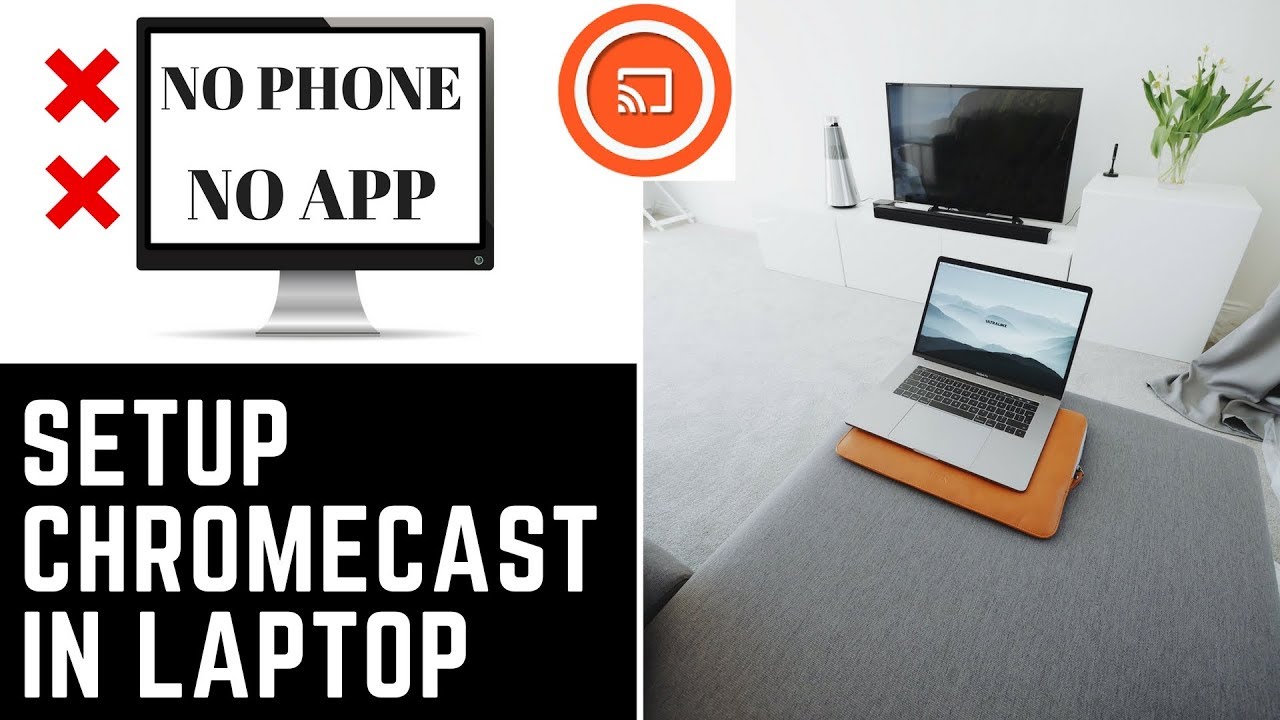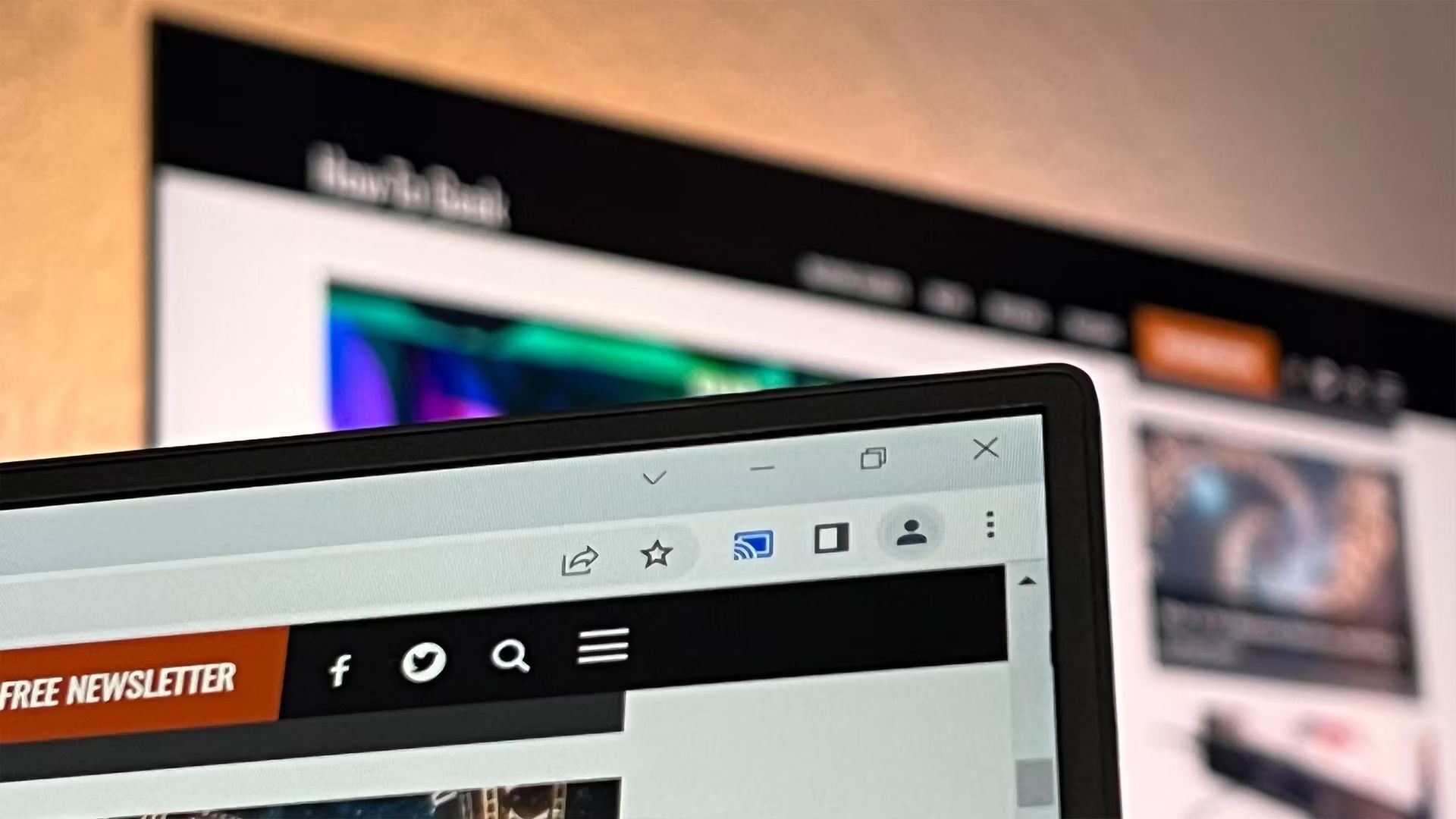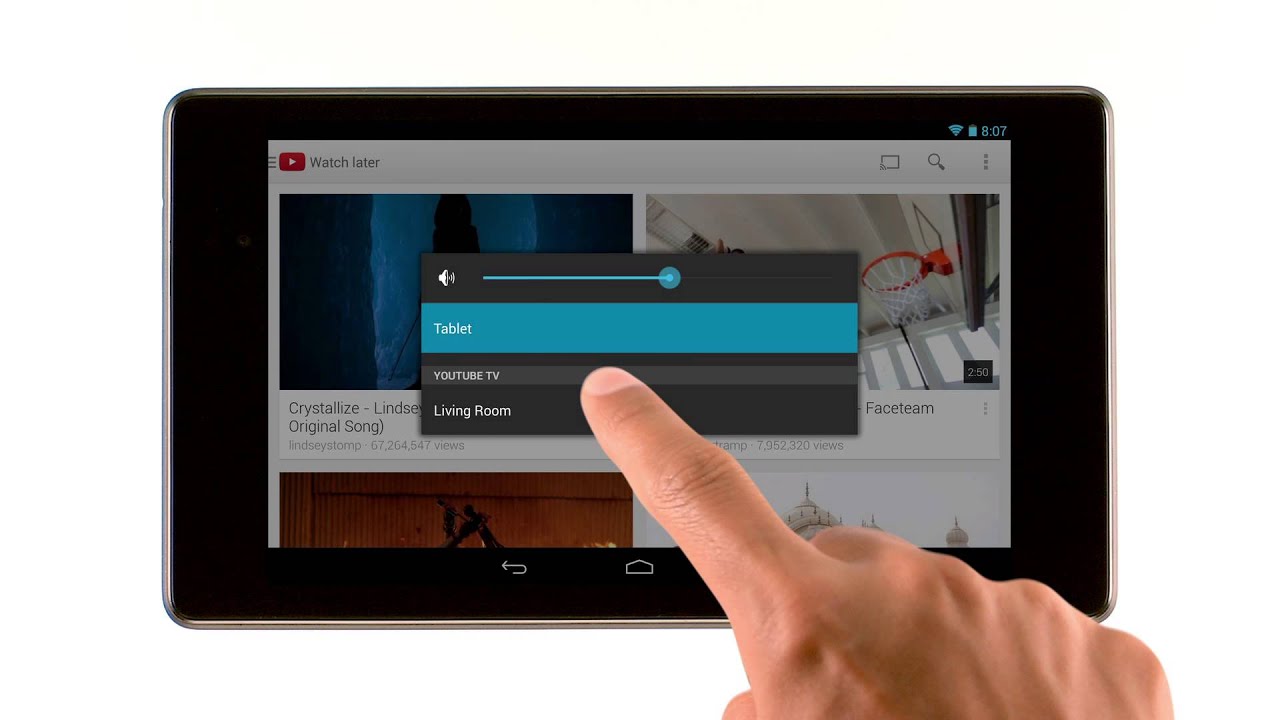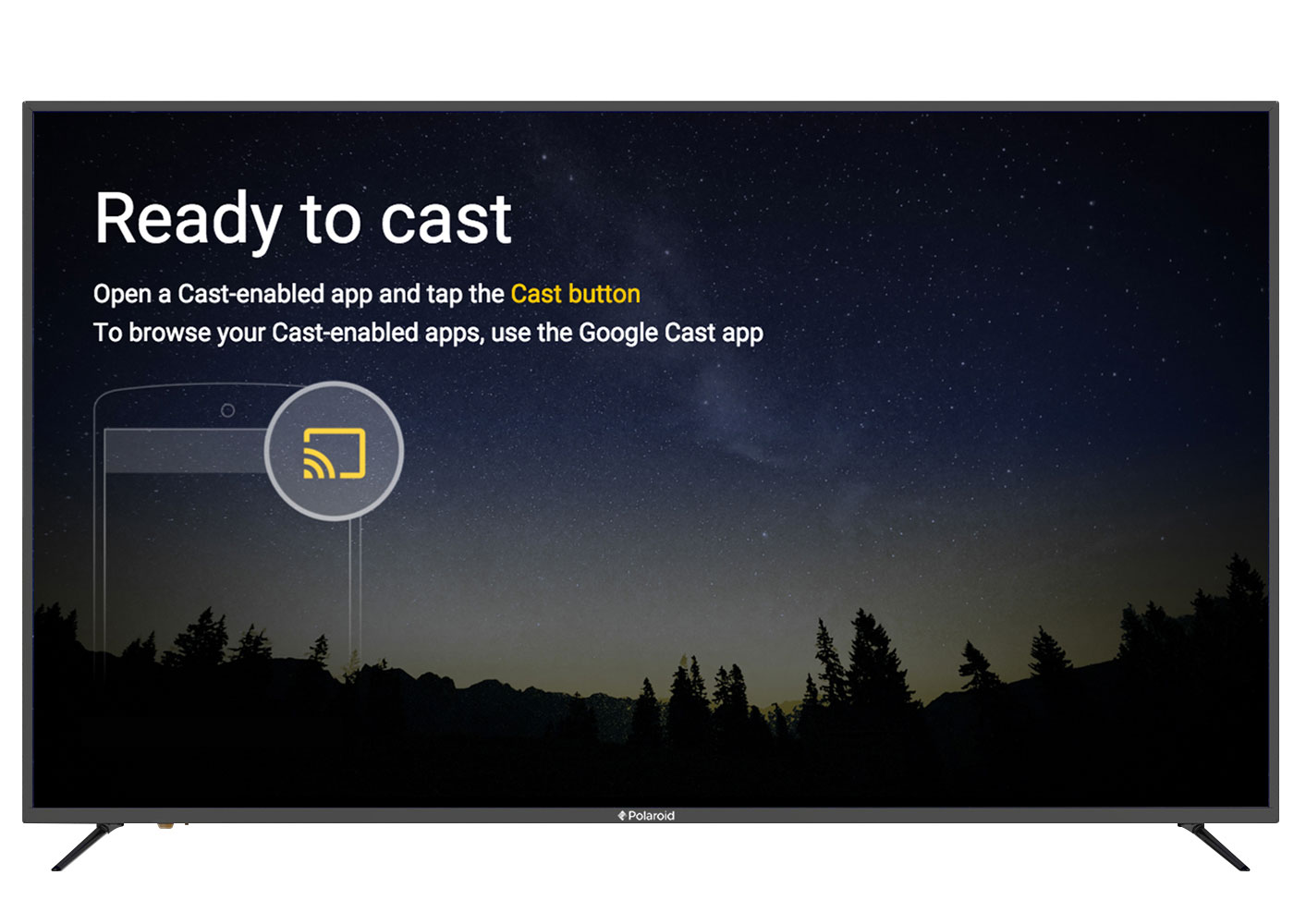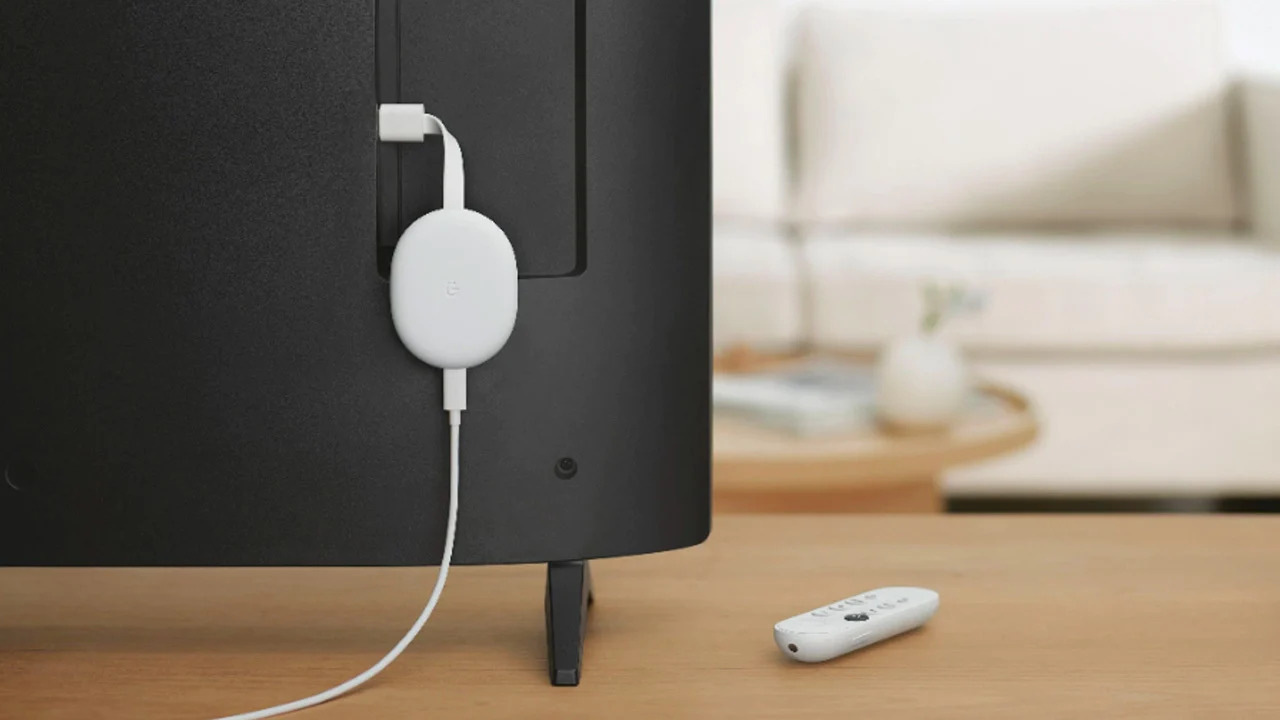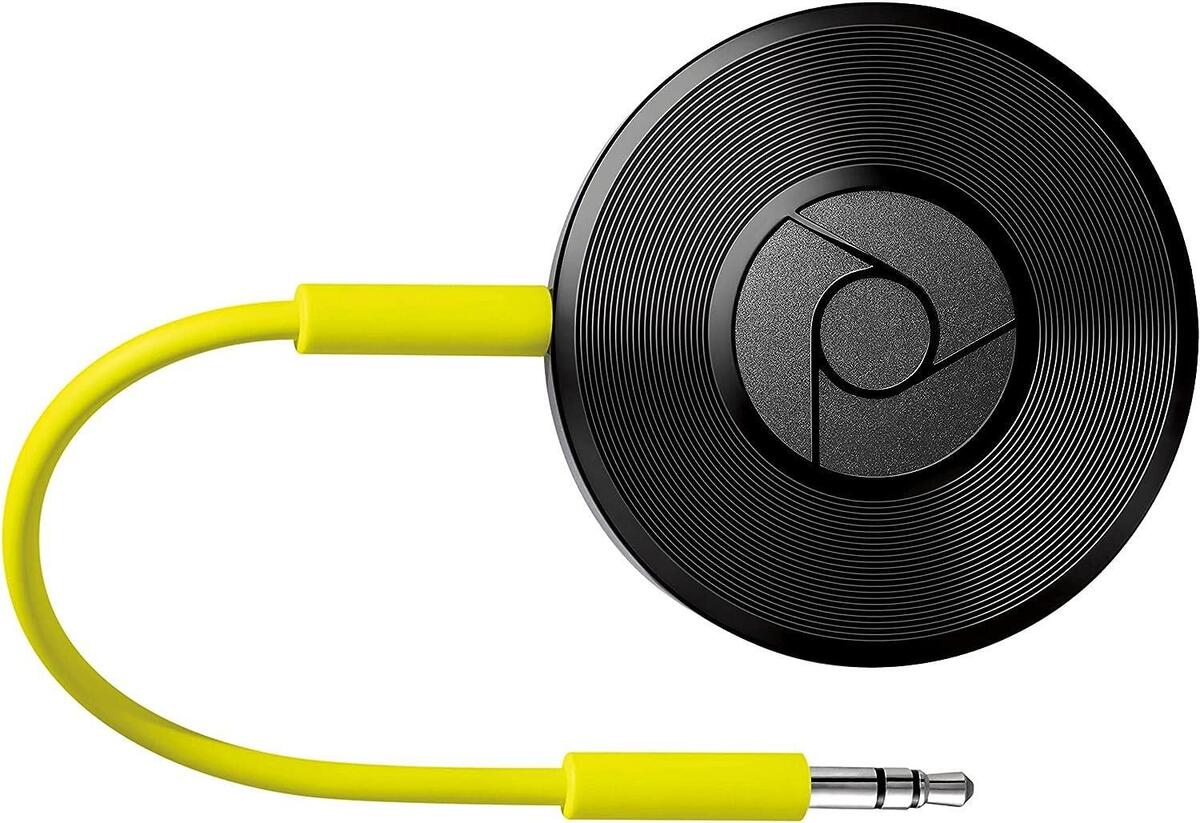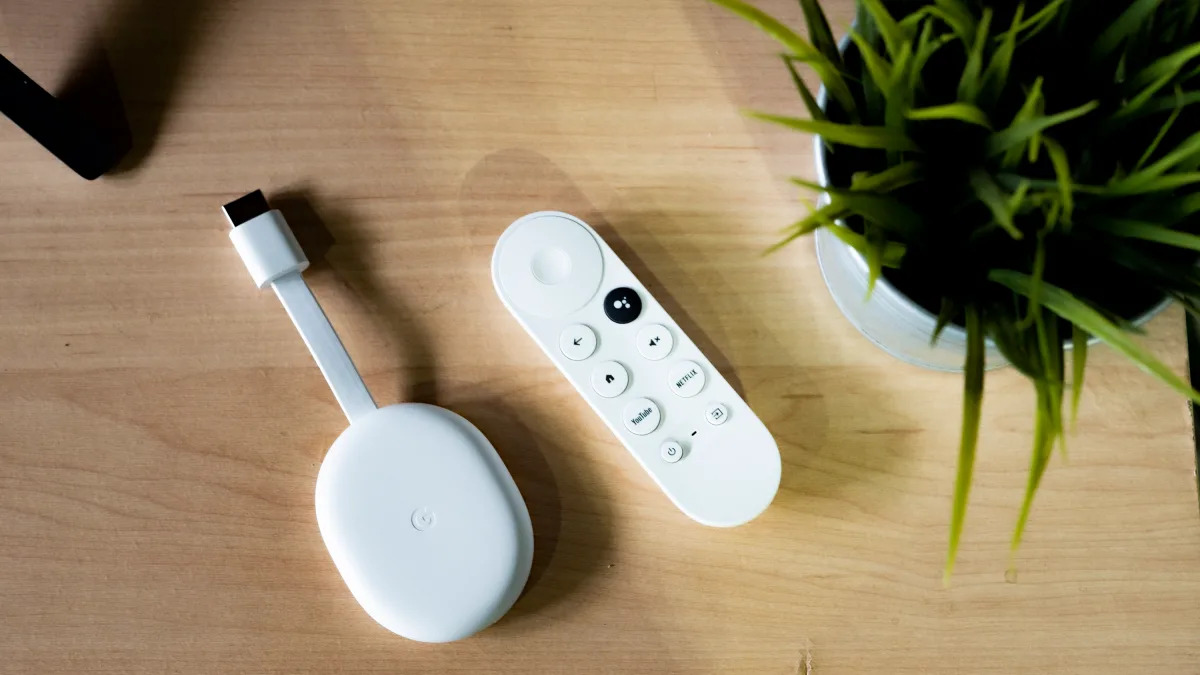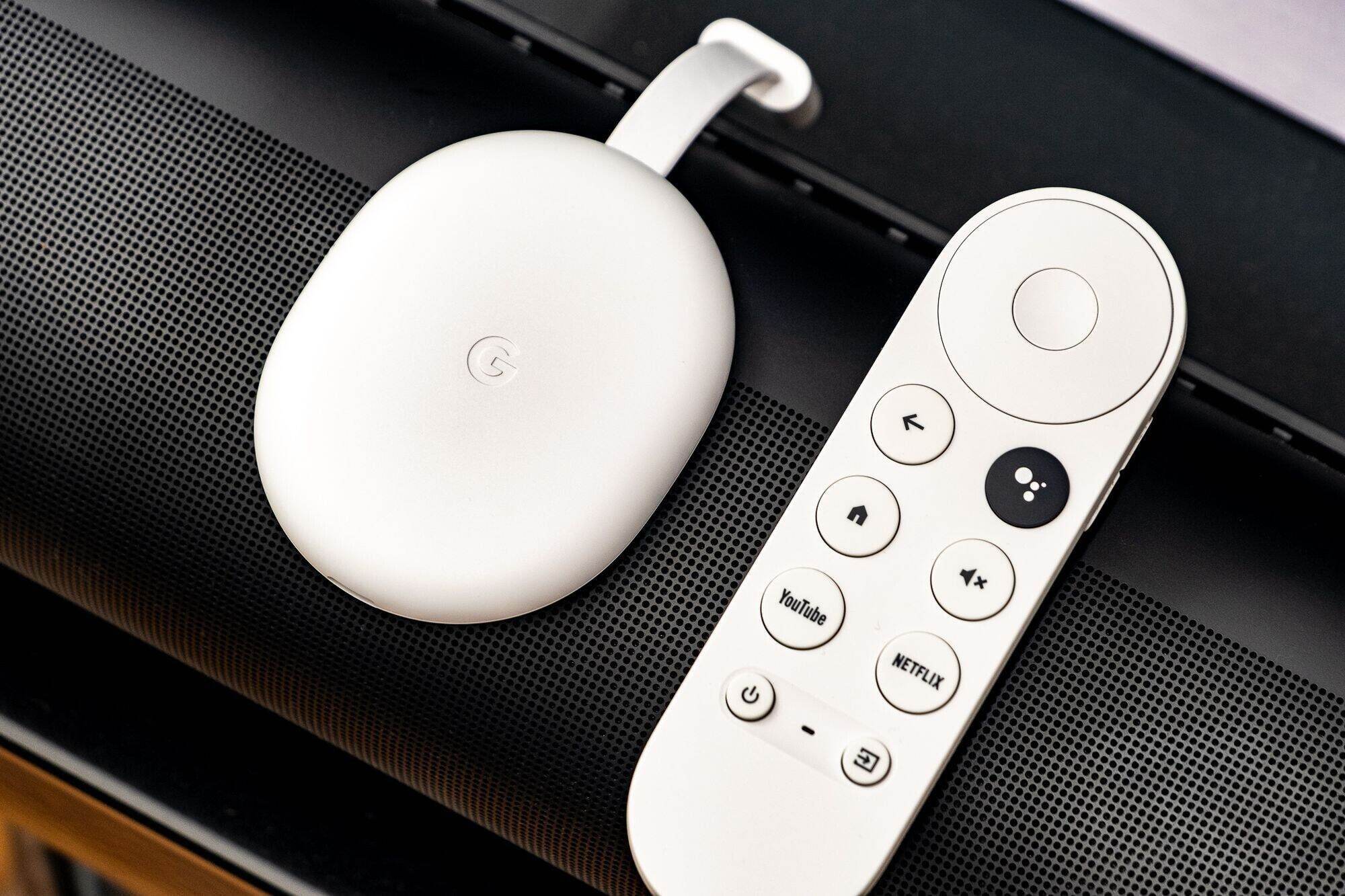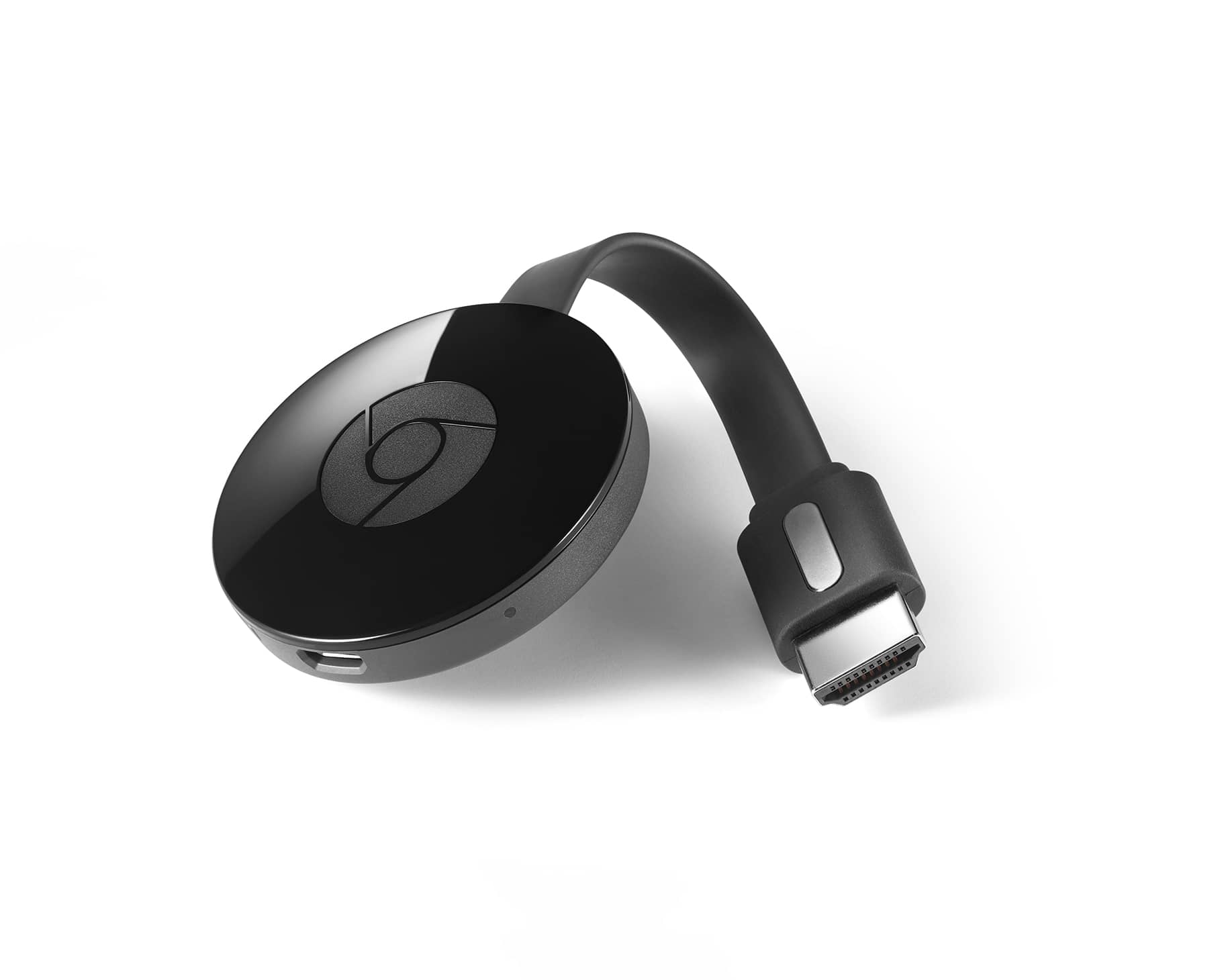Introduction
Welcome to our guide on how to connect to Chromecast from your laptop! Chromecast is a popular streaming device that allows you to stream your favorite movies, TV shows, and music from your laptop or mobile device to your TV. It offers a seamless and convenient way to enjoy a wide range of streaming content on the big screen.
Connecting Chromecast to your laptop is a straightforward process that requires a few simple steps. By following our guide, you’ll be able to cast videos, photos, and other media effortlessly from your laptop to your TV using Chromecast.
Before we dive into the steps, there are a few prerequisites you’ll need to have in place. Firstly, make sure you have a compatible TV with an HDMI input. Chromecast requires an HDMI connection to function properly. Additionally, you’ll need a stable Wi-Fi network to facilitate the connection between your laptop and Chromecast.
In this guide, we’ll walk you through three different methods to connect Chromecast to your laptop. The first method involves casting from the Google Chrome browser, the second method uses the Google Home app, and the third method allows for casting from third-party apps. Each method has its own advantages, so you can choose the one that suits your preferences.
If you’re ready to unlock the full potential of your Chromecast and enjoy a seamless streaming experience from your laptop, let’s get started!
Prerequisites for Connecting Chromecast to Laptop
Before you can connect Chromecast to your laptop, there are a few things you’ll need to have in place. Ensuring you meet these prerequisites will help ensure a smooth setup process and uninterrupted streaming experience.
1. A compatible TV with HDMI input: Chromecast requires an HDMI connection to connect to your TV. Make sure your TV has an available HDMI port that you can use. Most modern TVs come equipped with multiple HDMI ports, so finding one to connect your Chromecast shouldn’t be a problem.
2. A stable Wi-Fi network: Chromecast relies on a Wi-Fi connection to stream content from your laptop to your TV. It’s important to have a stable and reliable Wi-Fi network to ensure smooth and uninterrupted streaming. If your Wi-Fi network is weak or you frequently experience connectivity issues, consider optimizing your network or using an Ethernet adapter to connect Chromecast to your router for a more stable connection.
3. A laptop with Google Chrome browser: To utilize Chromecast’s casting features, you’ll need to have the Google Chrome browser installed on your laptop. Chromecast uses the Google Cast extension, available exclusively for Google Chrome, to cast content from your laptop to your TV. If you don’t already have Google Chrome installed, you can easily download it from the official website.
4. A Google account: To set up Chromecast and access its features, you’ll need a Google account. If you don’t have one, you can create a new account for free. Having a Google account allows you to personalize your Chromecast experience, access streaming apps, and manage connected devices easily.
Once you have these prerequisites in place, you’ll be ready to connect Chromecast to your laptop and start streaming your favorite content on the big screen. In the next sections, we’ll guide you through the steps to connect Chromecast using different methods, including casting from Chrome browser, using the Google Home app, and utilizing third-party apps.
Step 1: Connect the Chromecast to Your TV
The first step in connecting Chromecast to your laptop is to ensure that your Chromecast device is properly connected to your TV. Follow these simple instructions to set up Chromecast:
- Unbox your Chromecast: Open the Chromecast package and locate the Chromecast dongle, power adapter, and HDMI extension cable.
- Connect Chromecast to your TV: Plug one end of the HDMI cable into the HDMI port on your TV and the other end into the HDMI port on the Chromecast dongle. If your TV doesn’t have an easily accessible HDMI port, you can use the HDMI extension cable to connect Chromecast.
- Power up Chromecast: Connect the power adapter to the Chromecast dongle and plug it into a power outlet. Ensure that the Chromecast is receiving power by looking for the LED light on the device.
- Select the appropriate HDMI input: Use your TV remote to switch the input source to the HDMI port connected to the Chromecast. Most modern TVs have a dedicated “input” or “source” button on the remote control to easily switch between inputs.
- Chromecast setup screen: Once you’ve switched to the correct HDMI input, you should see the Chromecast setup screen on your TV. If you don’t see anything, make sure that your TV is on the correct input and that the Chromecast is powered up correctly.
- Follow on-screen instructions: Use your laptop or mobile device to follow the on-screen instructions displayed on your TV. This will involve connecting to your Wi-Fi network and signing in to your Google account.
- Chromecast connected: After completing the setup process, you will see a confirmation message that Chromecast is connected to your Wi-Fi network and ready to be used.
Once your Chromecast device is connected to your TV, you’re ready to move on to the next step and set up the connection between your laptop and Chromecast.
Step 2: Download and Install the Google Home App
After connecting Chromecast to your TV, the next step is to download and install the Google Home app on your laptop. The Google Home app allows you to manage and control your Chromecast device, including setting up connections, adjusting settings, and casting content from various compatible apps.
Follow these steps to download and install the Google Home app:
- Open your preferred web browser on your laptop and go to the official Google Home website.
- Click on the “Get Started” or “Download” button to initiate the app download process.
- Once the download is complete, locate the installation file and double-click on it to start the installation process.
- Follow the on-screen instructions to install the Google Home app on your laptop.
- After the installation is complete, launch the Google Home app.
- If prompted, sign in to your Google account using your email address and password. If you don’t have a Google account, you’ll need to create one.
- Once signed in, the app will search for any compatible devices, including your Chromecast device.
- When your Chromecast device is identified, follow the on-screen instructions to connect it to your Wi-Fi network.
- After successfully connecting your Chromecast to the Wi-Fi network, the Google Home app is ready to use.
The Google Home app serves as the central hub for managing your Chromecast device, allowing you to configure settings, discover new apps, and control the casting process from your laptop. It provides an intuitive and user-friendly interface for seamless interaction with your Chromecast device.
With the Google Home app installed, you’re now ready to proceed to the next step and establish a connection between your laptop and Chromecast.
Step 3: Connect Chromecast to Your Laptop
Now that you have your Chromecast device connected to your TV and the Google Home app installed on your laptop, it’s time to establish a connection between your laptop and Chromecast. There are several methods you can use to connect Chromecast to your laptop, including casting from the Chrome browser, using the Google Home app, or utilizing third-party apps.
Method 1: Casting from Chrome Browser
The first method involves casting content directly from the Google Chrome browser on your laptop. Follow these steps to connect Chromecast to your laptop using this method:
- Open the Google Chrome browser on your laptop.
- Click on the three vertical dots in the top-right corner of the browser window to open the Chrome menu.
- Select “Cast” from the dropdown menu.
- The Cast menu will appear, showing available devices. Select your Chromecast device from the list.
- Once connected, the browser tab or entire screen will be mirrored on your TV through Chromecast.
- You can now stream videos, display photos, or browse websites directly from your laptop to your TV using Chromecast.
Method 2: Casting from Google Home App
The second method involves casting content from the Google Home app on your laptop. Here’s how to connect Chromecast using this method:
- Launch the Google Home app on your laptop.
- Select your Chromecast device from the list of available devices.
- Tap on the “Cast my screen” button to cast your laptop’s screen to the TV.
- Your laptop’s screen will be mirrored on your TV through Chromecast, allowing you to stream content, play videos, or showcase presentations.
Method 3: Using Third-Party Apps
Lastly, you can connect Chromecast to your laptop using third-party apps that support casting. These apps, such as Netflix, YouTube, and Spotify, have built-in casting functionality that allows you to stream content directly to your TV. To connect Chromecast using third-party apps, follow these steps:
- Open the third-party app on your laptop.
- Look for the cast icon within the app’s interface. It is usually represented by a rectangle with Wi-Fi waves or the “CAST” text.
- Click on the cast icon and select your Chromecast device from the available list.
- The app’s content will now be streamed directly to your TV via Chromecast.
By following any of these methods, you can successfully connect Chromecast to your laptop and enjoy streaming content on the big screen. Cast your favorite videos, view photos, or browse websites with ease, all thanks to Chromecast’s seamless integration with your laptop.
Method 1: Casting from Chrome Browser
One of the easiest and most common methods to connect Chromecast to your laptop is by casting content directly from the Google Chrome browser. This method allows you to mirror browser tabs or your entire screen to your TV through Chromecast. Follow these steps to connect Chromecast to your laptop using the casting feature in the Chrome browser:
- Open the Google Chrome browser on your laptop by clicking on its icon in the taskbar or searching for it in your applications.
- Click on the three vertical dots located in the top-right corner of the browser window to open the Chrome menu.
- In the dropdown menu, click on the “Cast” option. A small window labeled “Cast” will appear.
- In the Cast window, click on the arrow next to the “Cast to” option and select your Chromecast device from the available list.
- Once you’ve selected your Chromecast device, you can choose to either cast a specific browser tab or your entire screen.
- To cast a specific tab, click on the “Cast this tab” option in the Cast window, and the selected tab’s content will be mirrored on your TV.
- If you want to cast your entire screen, click on the “Cast desktop” option. This will mirror everything on your laptop’s screen to your TV.
- While casting, the Cast window will display the name of the tab or the entire screen being casted. You can control the casting process by adjusting the volume, pausing, or stopping the cast from the Cast window.
- To stop casting, either click on the “Stop” button in the Cast window or close the Chrome browser on your laptop.
With the ability to cast from the Chrome browser, you can easily stream videos, display photos, or browse websites on your TV through Chromecast. You can enjoy your favorite online content with optimized visuals on the bigger screen, enhancing your viewing experience.
It’s important to note that not all websites or web-based applications are cast-compatible. While most popular websites like YouTube and Netflix support casting, others may not. In such cases, using the other casting methods or resorting to third-party apps may provide a solution.
Method 2: Casting from Google Home App
In addition to casting from the Chrome browser, you can also connect Chromecast to your laptop using the Google Home app. The Google Home app offers a convenient way to control and manage your Chromecast device, including casting content from various compatible apps. Follow these steps to connect Chromecast to your laptop using the Google Home app:
- Launch the Google Home app on your laptop. You can find the app in your Applications folder or by searching for it in your Start menu.
- Once the app is open, it will automatically search for any Chromecast devices on the same Wi-Fi network.
- From the list of available devices, select your Chromecast device to connect it to your laptop.
- In the Google Home app, you will find a toolbar at the bottom of the screen. Tap on the “Cast my screen” button, which looks like a rectangular display with Wi-Fi signals emanating from it.
- The app will present you with options to cast your entire screen or specific media files, depending on your preferences.
- To cast your entire screen, tap on the “Cast screen” button and select your Chromecast device from the available list.
- To cast specific media files, tap on the media tab (e.g., Photos, Videos, Music) and choose the desired file to cast to your Chromecast.
- Your laptop’s screen or selected media will now be wirelessly mirrored on your TV through Chromecast.
While casting from the Google Home app, you can control the playback, volume, and other settings directly from the app. You can also navigate between different media files or open other compatible casting apps from within the Google Home app.
Using the Google Home app simplifies the casting process and provides a central hub for managing your Chromecast device. It offers a seamless and user-friendly experience, allowing you to effortlessly stream content from your laptop to your TV.
Keep in mind that not all apps may support casting directly from the Google Home app. If you encounter any issues or limitations, you can explore other casting methods or rely on third-party apps that support casting to enjoy a wider range of content on your TV.
Method 3: Using Third-Party Apps
In addition to casting from the Chrome browser and the Google Home app, another method to connect Chromecast to your laptop is by using third-party apps that support casting. These apps provide built-in casting functionality, allowing you to easily stream content from your laptop to your TV. Here’s how you can connect Chromecast to your laptop using third-party apps:
- Open the third-party app on your laptop that supports casting. Examples of such apps include Netflix, YouTube, Spotify, and many more.
- Look for the cast icon within the app’s interface. The cast icon is usually represented by a rectangle with Wi-Fi signals or the word “CAST”. It is typically located either in the top right or bottom right corner of the app’s screen.
- Click on the cast icon and select your Chromecast device from the available list of devices.
- Once connected, the app’s content will be casted directly to your TV through Chromecast. You can control the playback, volume, and other settings from within the app.
Using third-party apps that support casting provides a convenient way to enjoy a wide range of streaming content on your TV. These apps are designed to optimize the casting experience, ensuring high-quality playback and smooth streaming.
It’s important to note that not all apps may support casting directly to Chromecast. However, Google has made efforts to expand the list of compatible apps, so you’ll find that many popular streaming services and media players support casting. You can explore different apps on your laptop and look for the cast icon to see if they offer casting functionality.
When using third-party apps to cast from your laptop to your TV, ensure that both your laptop and Chromecast are on the same Wi-Fi network for a seamless connection. Additionally, keep your apps and Chromecast firmware up to date to access the latest features and improve compatibility.
By leveraging the capabilities of third-party apps, you can easily connect Chromecast to your laptop and enjoy a vast array of online streaming content on your TV with just a few clicks.
Troubleshooting Common Issues
While connecting Chromecast to your laptop is generally a straightforward process, you may encounter some common issues along the way. Here are a few troubleshooting tips to help you resolve any connectivity or casting problems you may encounter:
- Ensure both devices are on the same Wi-Fi network: The laptop and Chromecast must be connected to the same Wi-Fi network to establish a successful connection. Verify that both devices are connected to the correct network and try reconnecting if necessary.
- Restart your devices: Sometimes, simply restarting your laptop and Chromecast can resolve minor connectivity issues. Turn off both devices, wait a few seconds, and then power them back on.
- Check for software updates: Ensure that your laptop’s operating system, Chrome browser, and Google Home app are updated to the latest versions. Outdated software can cause compatibility issues with Chromecast.
- Move closer to your Wi-Fi router: If you’re experiencing weak or intermittent connectivity, try moving your laptop and Chromecast closer to your Wi-Fi router. This can ensure a stronger and more stable connection.
- Check your Wi-Fi signal strength: Use your laptop or a Wi-Fi analyzer app to check the signal strength of your network. If the signal is poor, consider optimizing your Wi-Fi network or using an Ethernet adapter to connect Chromecast for a more stable connection.
- Disable VPN or proxy settings: Virtual private networks (VPNs) and proxy settings can interfere with the Chromecast connection. Temporarily disable them and try connecting again.
- Reset Chromecast to factory settings: If all else fails, you can try resetting your Chromecast to factory settings. To do this, press and hold the reset button on your Chromecast for about 20 seconds. This will reset the device and clear any issues that may be affecting the connection.
If you’re still experiencing issues after trying these troubleshooting steps, you can consult the official Google Chromecast support website or seek assistance from technical forums and communities. They often provide solutions for specific issues and offer valuable insights from other Chromecast users.
Remember, each troubleshooting step should be followed carefully, and it’s essential to have patience as you navigate through the troubleshooting process. With persistence and a methodical approach, you’ll likely overcome any obstacles and enjoy seamless casting from your laptop to your TV using Chromecast.
Conclusion
Connecting Chromecast to your laptop opens up a world of possibilities for streaming your favorite content on the big screen. By following the steps outlined in this guide, you can easily connect Chromecast to your TV and establish a seamless connection between your laptop and Chromecast.
We covered three different methods to connect Chromecast to your laptop. The first method involves casting from the Chrome browser, allowing you to mirror browser tabs or your entire screen. The second method utilizes the Google Home app to cast content from your laptop to your TV. The third method involves using third-party apps that support casting, expanding the range of content you can enjoy on your TV.
Throughout the setup process, it’s important to ensure that your devices are connected to the same Wi-Fi network, that your software is up to date, and that you troubleshoot any common issues that may arise. Taking the time to address these factors will result in a smoother and more enjoyable casting experience.
Whether you’re streaming videos, displaying photos, or browsing websites, Chromecast provides a convenient way to enjoy content from your laptop on a larger screen. It enhances your viewing experience and allows you to share media with friends and family in a more immersive way.
Remember, each method has its own advantages, so feel free to explore and find the one that suits your preferences and needs. Should you encounter any difficulties, refer to the troubleshooting section or seek assistance from official support channels and online communities.
Now that you’re equipped with the knowledge to connect Chromecast to your laptop, it’s time to unleash the full potential of your streaming device. Start casting your favorite content from your laptop to your TV and elevate your entertainment experience like never before.







